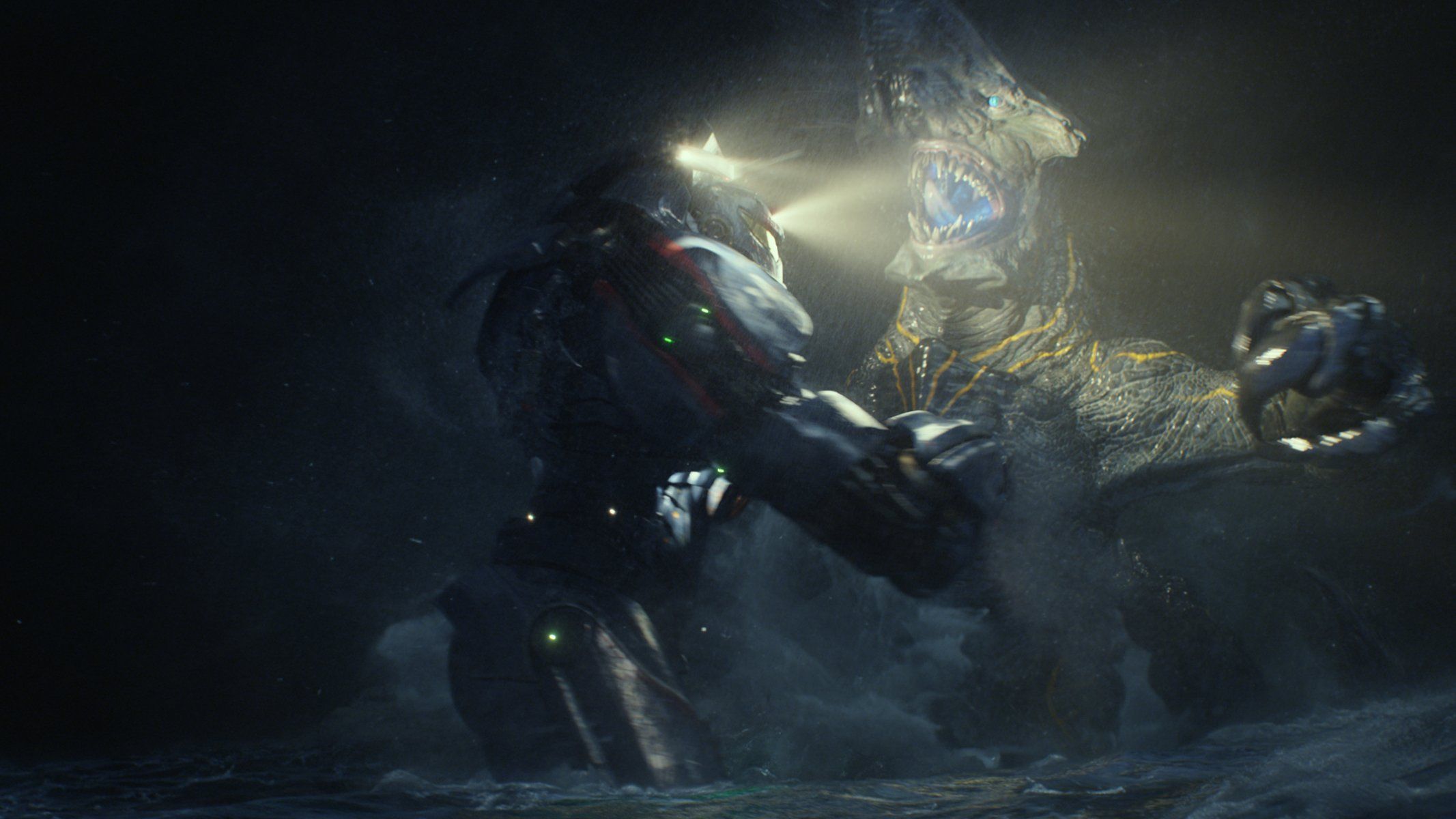Pacific Rim: Uprising Review
Guillermo del Toro’s Pacific Rim became a phenomenon on its release in 2013, defining the very best in ‘mecha and monster showdown’ movies and creating the Mako Mori test in one fell swoop. So with del Toro cleaning house at the awards, it’s suitable for Pacific Rim: Uprising to capitalise at such a crucial time. If, of course, Guillermo del Toro had directed this project. And after watching Pacific Rim 2, one dearly wishes that he had.
Uprising picks up 10 years after the war, and Jake Pentecost (John Boyega), son of Idris Elba’s Stacker Pentecost, and a young Jaeger engineering street urchin named Amara Namani (Cailee Spaeny) are enlisted to the Shatterdome. Early on, however, it becomes clear that Jaeger pilots are being outmoded by the drones of Jing Tian’s Shao Industries, but things take a turn for the worst as the drones appear to be hijacked within the opening scenes of the film.
Despite two good lead performances, the script falls into too many unexamined clichés and much of the mythology is scrapped for long fight scenes
Boyega and Spaeny shine brightest here, and their charisma and natural energy manage to often single-handedly carry a clunky script. While Pacific Rim (2013) felt like a careful dedication to monster movies, Uprising is franchise bait, taking the place of Transformers and Power Rangers on the action franchise conveyor belt. Despite two good lead performances, the script falls into too many unexamined clichés and much of the mythology is scrapped for long fight scenes. The actual filmmaking at work here is fine; Steven S. DeKnight is a capable director who managed to attempt the script he was handed with a little bit of grace, and there are some competent CGI effects and palatable cinematography. However, scenes too often felt soulless and location-less, even when set within the Shatterdome.
On a similar note, this movie, more so than any seen in the past few years, caters noticeably to the Chinese market. While this was a feature of the last movie too, what was once a tasteful homage to the roots of Kaiju culture is now shoe-horned cultural references and sometimes cringe-worthy pandering to overseas markets. There’s a very clear distinction between representation, homage and respect, and the mindless tailoring of a Hollywood flick for a market they’re still behind in understanding.
On that note, the less said about the appearance of Rinko Kikuchi as Mako Mori, the better. For a film starring the (woefully underused) Mako, it’s ironic that this film passes the Bechdel Test, but not the Mako Mori test. The treatment of their female characters really doesn’t improve from there. Numerous characters come and go, but many of them have unmemorable roles and one-liners that leave little to no impact after the credits roll. With the script attributed to four different writers, it’s no surprise that the cast became so bloated and the characters so thinly developed.
I found myself adjusting to the ridiculousness, but there’s definitely going to be audiences who hate it
The “kicker” twist of Uprising occurs about two-thirds of the way into the film and it reveals the apparent impetus behind the events occurring. It links back to the familiar face of Newton Geiszler, the zany, kaiju-loving scientist from the first movie (played by Charlie Day). The twist is as zany as Geiszler and the effect on audiences is going to be profoundly varied in different screenings. After the initial surprise, I found myself adjusting to the ridiculousness, but there’s definitely going to be audiences who hate it, considering how left field it is.
Day does his best with such insane material but the script doesn’t really allow him much leeway or depth, as with many of the other characters. The heavy marketing of the film to Chinese marketing rears its head here too, particularly in his more muted relationship with fellow scientist Hermann Gottlieb (Burn Gorman). But even with such criticisms, it’s hard to truly feel too much displeasure with these two. They each give 110% to the roles and, as with the first film, deliver vibrant, watchable performances built on sheer chemistry and charisma. And with performances from stand-in cut-out military men like Scott Eastwood’s Nate Lambert, it’s a relief to see them on-screen sometimes.
Pacific Rim: Uprising is by no means a painful watch. It’s a genuinely fun movie to turn your brain off and watch some robots hit kaiju in the face. I went to see it in 4D and had an absolute blast in those gimmicky moving chairs – this movie has a sense of fun and a sense of humour, and it’s not the worst movie of its kind by a long shot. But for a sequel, audiences expect more than that, and while there was an attempt made to try something different, the pieces of the script didn’t sufficiently come together to achieve it. The sad thing about Uprising is that, with some more time spent editing, a clearer focus on character, and just a little bit more thought towards the basic strokes of each act, it could have been a much, much better movie.

Comments